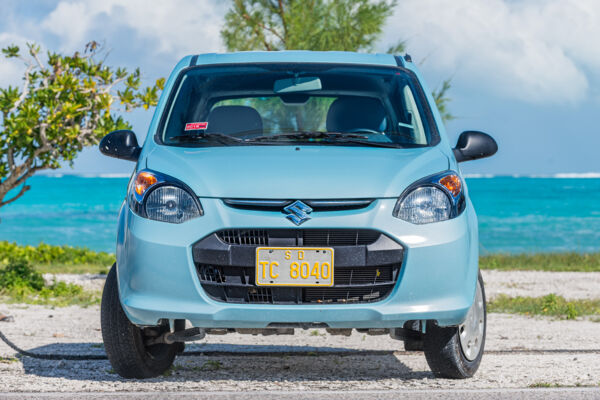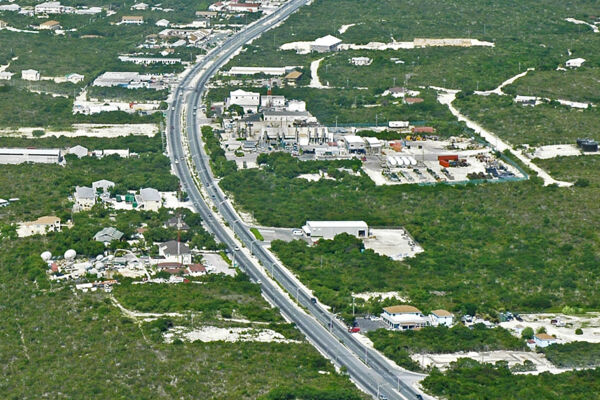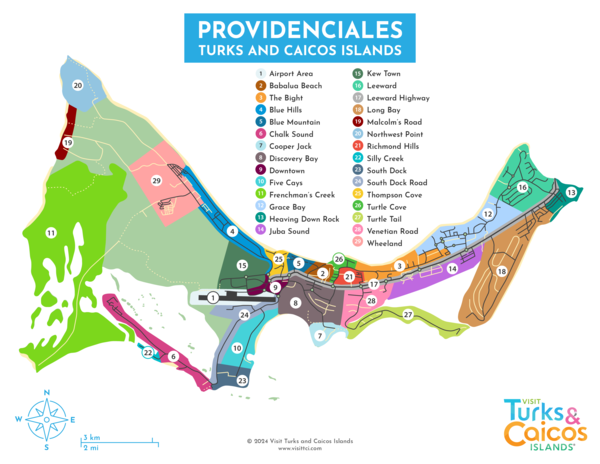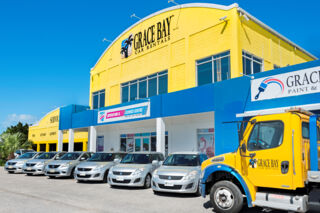Providenciales Getting Around & Transport











Although Providenciales is a relatively small island with a landmass of 38 square miles (98 km²), getting around can be expensive if you don’t have a car. If you’d like to explore the island or see more than what is within walking distance of your accommodation, consider renting a car for at least part of your stay. Taxis are widely available on Providenciales, yet tend to be expensive.
The Turks and Caicos does not have any organized public transportation. On Providenciales, illegal and unlicensed ‘jitney' taxis have taken the place of bus services. Avoid using jitneys completely—jitneys often exhibit erratic and dangerous driving and will charge tourists overinflated rates.
Driving and Vehicle Rentals
A rental car is the most cost-effective method of transport on Providenciales. Outside of the central Grace Bay region, attractions and restaurants tend to be spread out across the island, with transit distances that are typically too far for walking.
As is the case in the U.K. and many British Commonwealth countries, traffic in the Turks and Caicos drives on the left. Roundabouts are frequently used, and there are no stoplights anywhere in the country. The speed limit on Providenciales is 40 mph (64 km/h) on highways and 20 mph (32 km/h) through settlements. Nearly all the main roads on the island are paved.
If you’re unfamiliar with roundabouts and driving on the left, it's strongly suggested that you read Driving in the Turks and Caicos.
Be aware that local rental agencies generally hold renters financially responsible for any damage that occurs while driving off-road. Attempting the rough roads out to the remote Northwest Point National Park, Malcolm’s Road Beach, and West Harbour Bluff in a low-clearance car often results in vehicle damage.
Local drivers can be dangerous and reckless, so stay alert. Be prepared for cars to stop suddenly in the road or to cut in front of you for no apparent reason.
Choosing a Rental Vehicle

On Providenciales, it's best to rent a car, Jeep, or SUV instead of scooters or specialty vehicles (such as 4x4 buggies and tricycle roadsters). Reasons include cost, safety, and protection from the sun.
Outside of the Grace Bay and Bight regions, scooters should be driven with great caution. On Leeward Highway and throughout much of the island, speeding and reckless driving are very common.
Existing Vehicle Damage
If you notice any damage or broken features on your vehicle, ensure that these issues are recorded on your rental agreement. This especially applies to scooters and specialty vehicles.
There have also been reports of renters noticing mechanical issues before leaving with the vehicle. After these issues were brought to the attention of employees of the rental agency, the renters were assured they wouldn’t be held accountable. After returning the vehicle, the renters were billed for repairs.
If your vehicle appears to be in poor condition or not operating properly, either ask for a replacement vehicle or use a different rental agency. Most of the rental fleets on Providenciales are relatively new and in good condition—this is not typically the case on the other islands in the country, where quality varies. There is no reason to rent a poor-condition vehicle on Providenciales.
Taxis

There are usually taxis waiting at the main resorts, at the Providenciales International Airport (PLS), and at the Graceway IGA on Leeward Highway. If you’re not at one of these locations, you’ll probably have to call for one.
Taxis in the Turks and Caicos are not metered. Instead, there is a government fixed rate for distances, but it’s a good idea to confirm the cost to your destination before beginning your journey.
For airport taxi fares, see Turks and Caicos Taxis.
Cycling
Cycling outside of the Grace Bay region of Providenciales is generally not recommended for several reasons, including reckless drivers, a lack of bicycle lanes, and the intense heat and sun.
Several resorts and villas offer complimentary bicycle use, and rentals are available from several businesses. Some companies also rent e-bikes.
More information on recommended routes, distances, and rentals can be found in the cycling section.

Popular Transport Businesses










